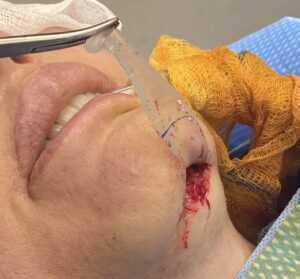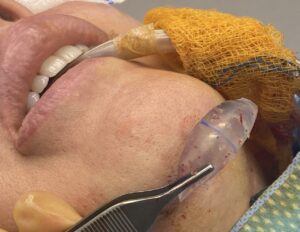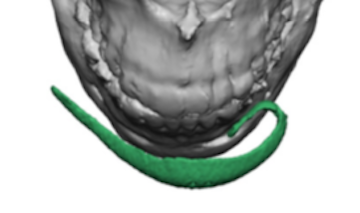Background: Despite the chin implant being viewed as a ‘simple’ facial implant procedure, it is still capable of having problems related to style/size selection as well as positioning on the bone. While infection and hematoma is always possible with chin implant surgery the vast majority of revisional/secondary surgeries are related to some feature of the implant itself.
Such chin implant misadventures have a wide variety of manifestations. But the two most common in my experience are: 1) too wide of a chin implant in a female and 2) malpositioning of the wings of extended anatomic style chin implant.

Speaking of extended anatomic chin implants their long wings as mentioned may have their merits but their thin ends with little material can pose a problem. They are very easy to become folded or bent when inserted which is often undetectable to the surgeon because they are so thin. This usually occurs because the dissected pocket is just slightly short of the length of the implant. But can also be the result of how the implant was inserted.




When evaluating postoperative chin implant concerns the use of 3D CT scans can be invaluable. There is little purpose in trying to eyeball the problem based on external appearance or the reading of previous operative notes. Knowing the precise implant location, style and size allows one to approach the secondary surgery with a precise intraoperative plan for improvement. (the one caveat is that Medpor implants may or may not be able to be radiographically seen)
Case Highlights:
1) The best method to confirm the placement as well as style and size of a chin implant is with a 3D CT scan.
2) An anatomic chin implant in a female which has excessive width can be reduced hand modified into a smaller anatomic style which makes the chin less wide.
3) With chin implant modification and repositioning screw fixation is needed to prevent recurrent implant malposition.
Dr. Barry Eppley
Indianapolis, Indiana






